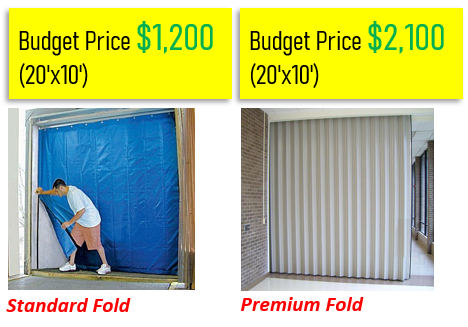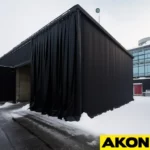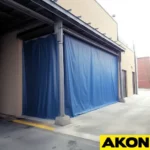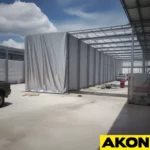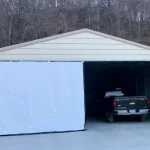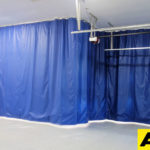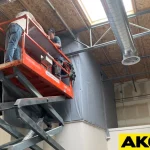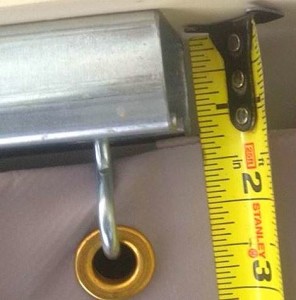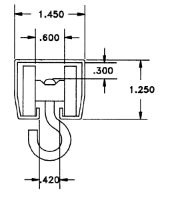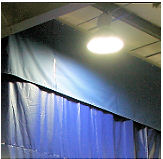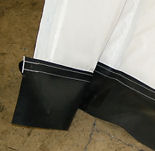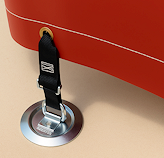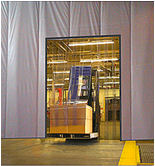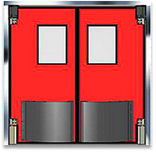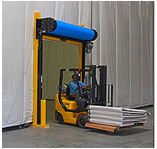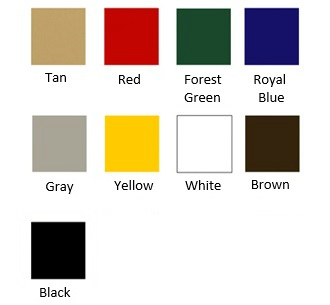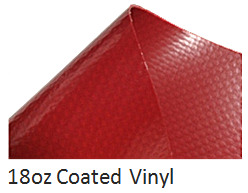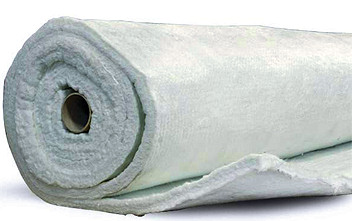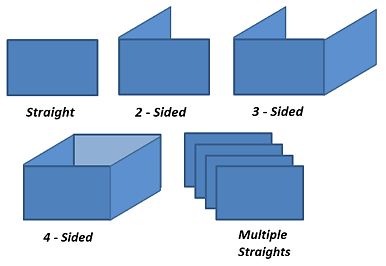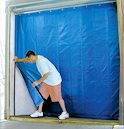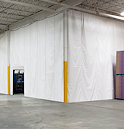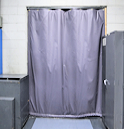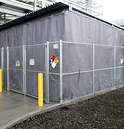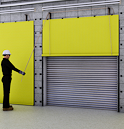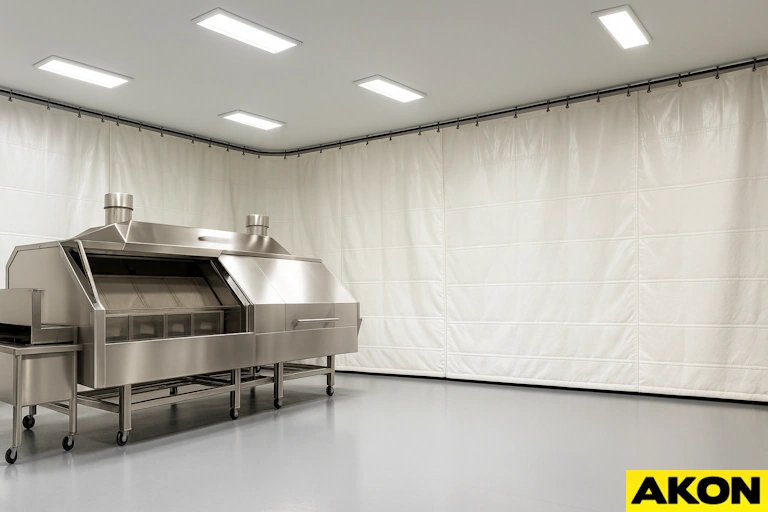
OVERVIEW
Industrial Insulated Curtains come in many sizes and custom shapes. Depending on your needs, these insulated industrial partitions curtains can be custom designed to match the exact width and height that you require. They are a great alternative to permanent walls as they are quicker to install, move, and take down.
Watch The Curtains in Action
Insulated Curtain Enclosures
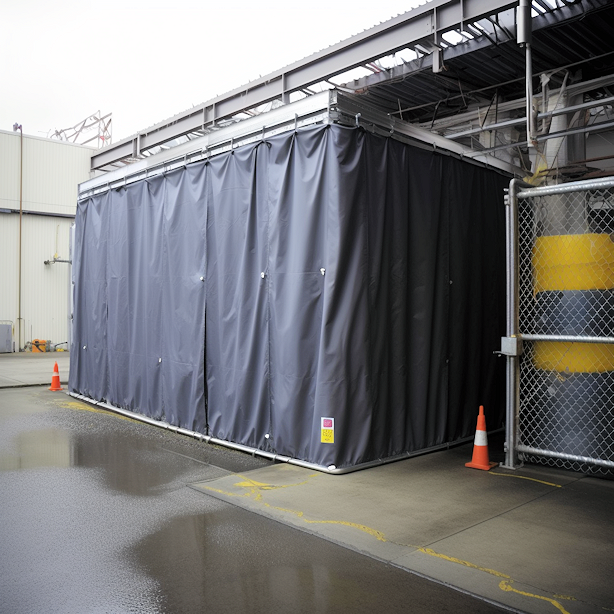
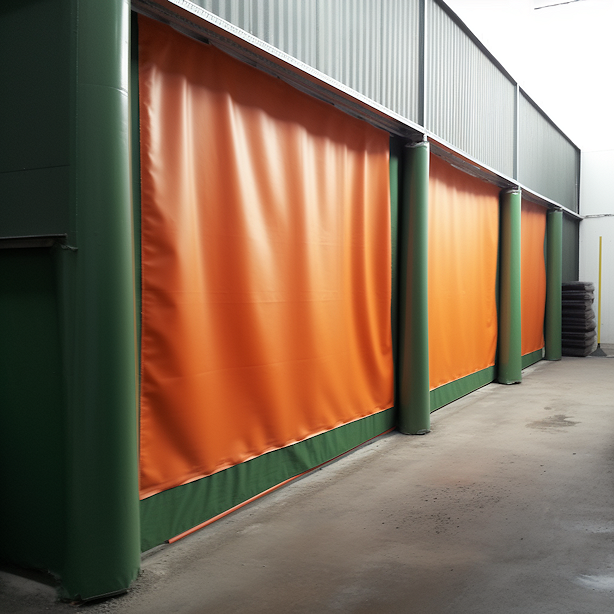

Conserve Energy With Flexibility
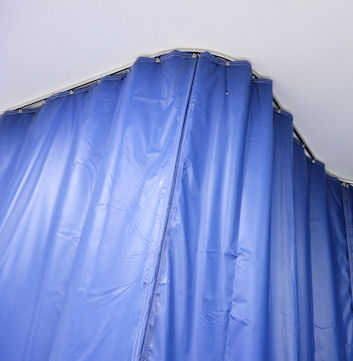
Benefits
- Huge energy savings
- Keep your shop or factory warm or cool
- Easy to move and customize
- Prevents condensation
- Doubles as noise control
- Less expensive than rigid walls
- Quick to install and take down and store
Applications
- Cold storage freezer curtains
- Walk-in freezers and coolers
- Industrial cold room seperation
- Dividing rooms into temperature zones
- Insulated garage curtains
- Insulated warehouse curtains
- Insulated shop curtains
Temperature Zoning
Create temperature zones for storing products at different temperatures or to create a more comfortable work environment.
Humidity Control
Effectively control humidity levels within your facility for food products or for better manufacturing processes.
Separate Tenants
Zone or lease out your warehouse to tenants who need to be kept separated due to their different operations.
Control Noise
Insulated curtains are also dual purpose noise control curtains due to the thick batting they are made from.
Folds Up and Stores Nicely
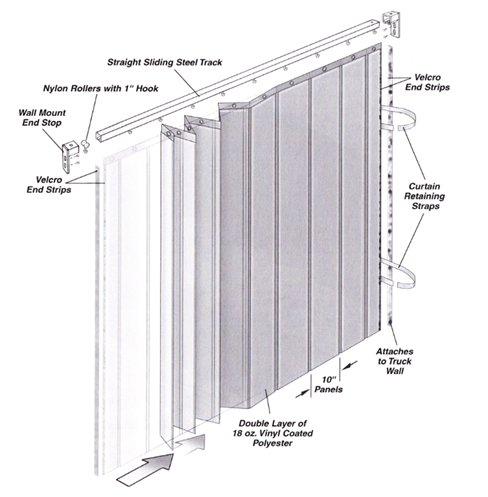
Operation
To help the insulated curtain wall fold up neatly, the curtains are guided via the curtain track which comes in a variety of different mounting styles. The industrial insulated curtains can be mounted to your ceiling, wall face, or can even be suspended from above using threaded rod or chain. Full height vertical Velcro is also optional for attachment to side walls. Also optional are magnet or Velcro splits for quick access.
Premium Folding Version

Premium Accordion Folding Insulated Curtain
If you need a premium look with super clean edges then you can choose our accordion insulated curtain. This model has sealed pockets to house the insulating batting which allows it to fold up in a more controlled manner. The appearance of this thermal industrial curtain is also more aesthetically appealing due to the way that it is produced.
R-Values To Choose From
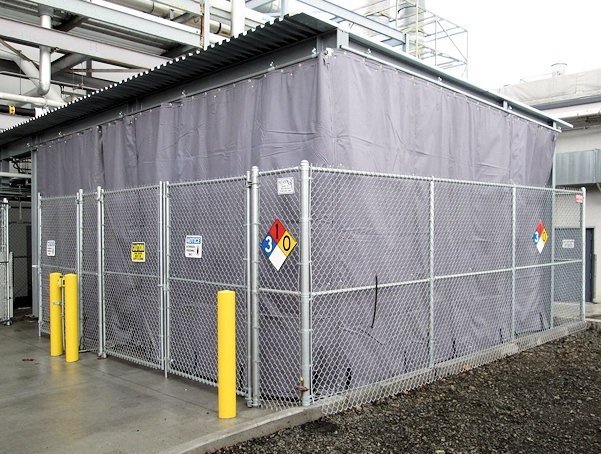
Temperature Control R-Values
You can choose from 3 different R-Values for our insulated divider curtains. R-Value is the capacity of an insulating material to resist heat flow. The higher the R-value, the greater the insulating power. As a general rule the longer you plan to have your thermal curtain installed the higher R-Value you should choose. This will give you the best ROI on your investment. If however your need is short term then it is best to use the less expensive R-Values as long term energy savings will likely not be gained.
- R3 – Standard Separation – Retractable and Stationary
- R6 – High Separation – Retractable and Stationary
- R9 – Highest Separation – Stationary
Control Air Flow

Floor Engagement
Cold air can get under a normal curtain that rests just above the floor and that can allow cold air to get under the curtain. This reduces the effectiveness of the temperature control curtains. Using a floor sweep to engage the floor prevents this issue by controlling the flow of air from one temperature zone to another. The 8" tall sweep Velcros onto the bottom of the curtain and hangs 6" below it. It can be replaced in the future or replaced with a taller or shorter sweep if you need to use the insulated curtains in another location with a different elevation.
Frequently Asked Questions
Insulated curtain walls help control temperature in big spaces like warehouses and factories. These thick vinyl curtains hang from tracks and divide areas without building permanent walls. The insulation inside stops heat from moving between different zones. Questions also come up about installation time, what materials hold up best, and how to keep them working right. This FAQ section answers the most common questions about insulated curtain walls. You'll learn what makes them effective, how long they last, and whether they make sense for your building.
Insulated Curtain Walls – Frequently Asked Questions
What are insulated curtain walls?
Insulated curtain walls are modular thermal barriers used to divide large indoor spaces while reducing heat transfer. They help maintain temperature zones in warehouses, manufacturing plants, cold storage areas, and semi-outdoor environments.
How do insulated curtain walls work?
They use a multi-layer construction that includes a durable vinyl exterior and internal insulation. This reduces heat loss, blocks drafts, and stabilizes temperatures between separated zones.
What materials are insulated curtain walls made of?
They are built from heavy-duty vinyl skins surrounding an insulated thermal core. Reinforced seams, industrial stitching, and durable mounting hardware increase strength and longevity.
Are insulated curtain walls energy-efficient?
Yes, they significantly reduce heating and cooling costs by minimizing air exchange between climate-controlled and non-controlled areas.
Can insulated curtain walls help retain heat?
Yes, the insulated core reduces heat loss and helps maintain warm temperatures in winter, making them ideal for climate-sensitive work zones.
Do insulated curtain walls block summer heat?
Yes, they also reduce heat gain from warm areas, helping keep cooler zones stable during hot weather conditions.
Do insulated curtain walls reduce noise?
Their multi-layer structure provides moderate sound reduction, improving acoustic comfort in busy industrial environments.
Are insulated curtain walls customizable?
Yes, they can be customized by height, width, insulation thickness, color, hardware type, and placement of doors or viewing windows.
Can I add clear vinyl windows to insulated curtain walls?
Yes, clear windows can be integrated to allow visibility, light transmission, and safe supervision of separated work areas.
Are insulated curtain walls removable?
Yes, they can be detached, relocated, or reconfigured based on seasonal needs or layout changes in the facility.
Are insulated curtain walls waterproof?
The vinyl exterior is water-resistant and protects against moisture, condensation, and humidity in industrial environments.
Can insulated curtain walls handle strong airflow or drafts?
Yes, when used with optional wind straps or anchoring systems, they remain stable even in environments with high air movement.
Can insulated curtain walls be used in cold storage or freezer areas?
They are ideal for refrigerated zones because they prevent cold air loss and help maintain strict temperature requirements.
Are insulated curtain walls suitable for food processing facilities?
The vinyl surface is easy to clean, moisture-resistant, and compatible with sanitation protocols required in food environments.
What mounting options are available?
Common options include track systems, grommets, Velcro seals, floor sweeps, and ceiling attachment brackets for stable installation.
How do I clean insulated curtain walls?
Use warm water, mild soap, and a soft cloth. Regular cleaning maintains appearance and prevents buildup of dust or residue.
Can insulated curtain walls be repaired?
Yes, individual sections, windows, or panels can be replaced without removing the entire system.
How long do insulated curtain walls last?
They typically last 8–15 years depending on environmental exposure, usage, and maintenance.
Are insulated curtain walls compatible with HVAC systems?
Yes, they work alongside heaters, coolers, and air filtration systems to create controlled environments.
Can these curtain walls be used for commercial or semi-outdoor applications?
They are commonly used in shipping areas, loading docks, commercial patios, and other spaces needing thermal separation without permanent construction.
Photo Gallery
Rolling Hardware
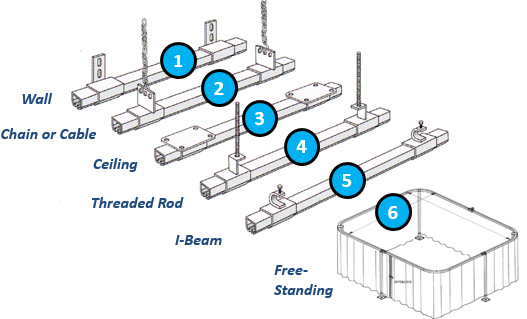
- 16 gauge galvanized steel tracks
- Nylon roller hooks for easy opening
- 6 mounting styles to connect to various structures
- Free standing hardware for up to 20' in height
Static Mount Hardware

- Aluminum Angle - Use with self tapping Tek screws to pinch curtain to angle.
- Grommets Only - You can then use many DIY methods to hang the curtains.
- Beam Clamps - Clamps onto the flange of beams, joists and purlins.
Get Started Now
